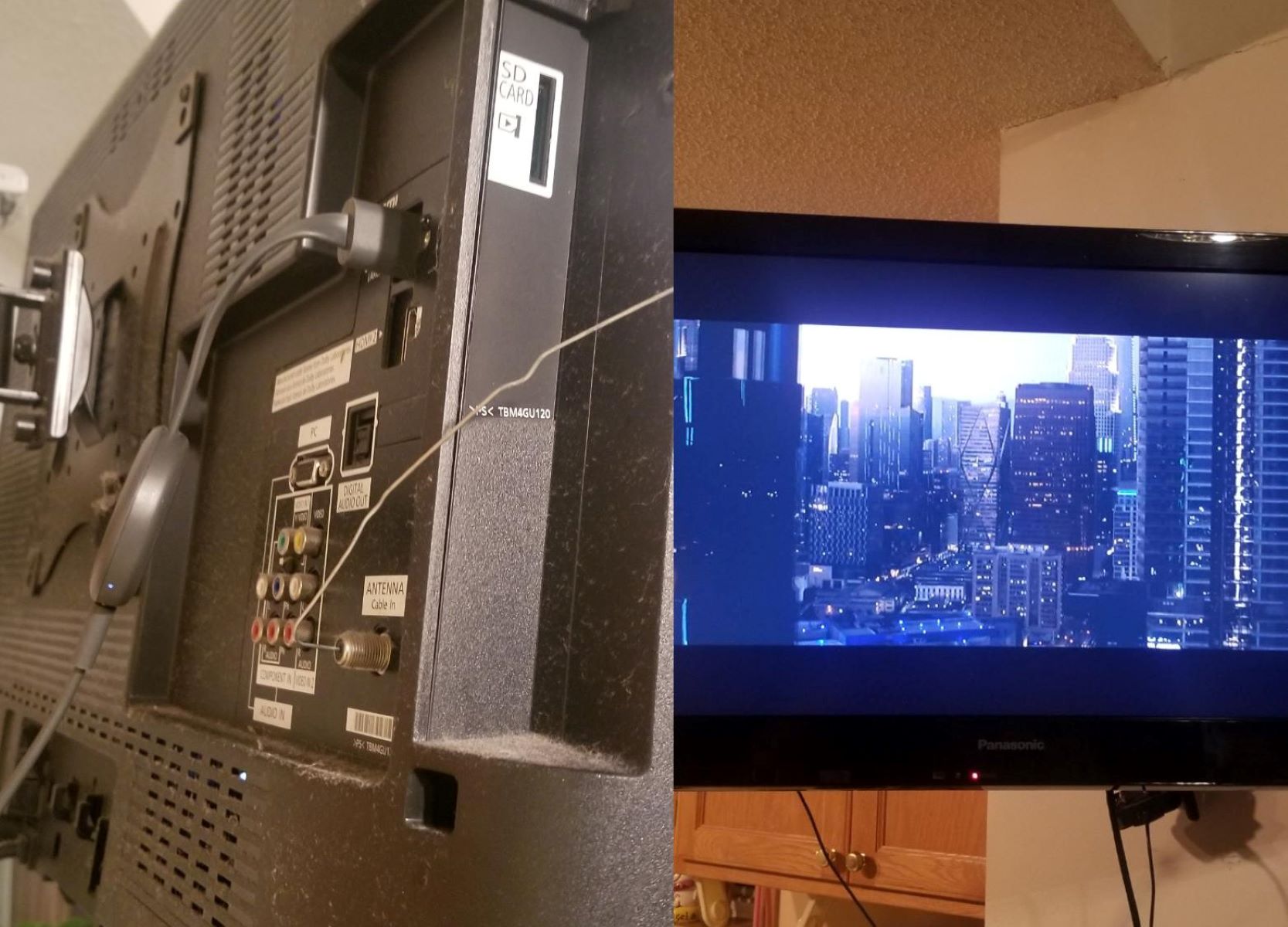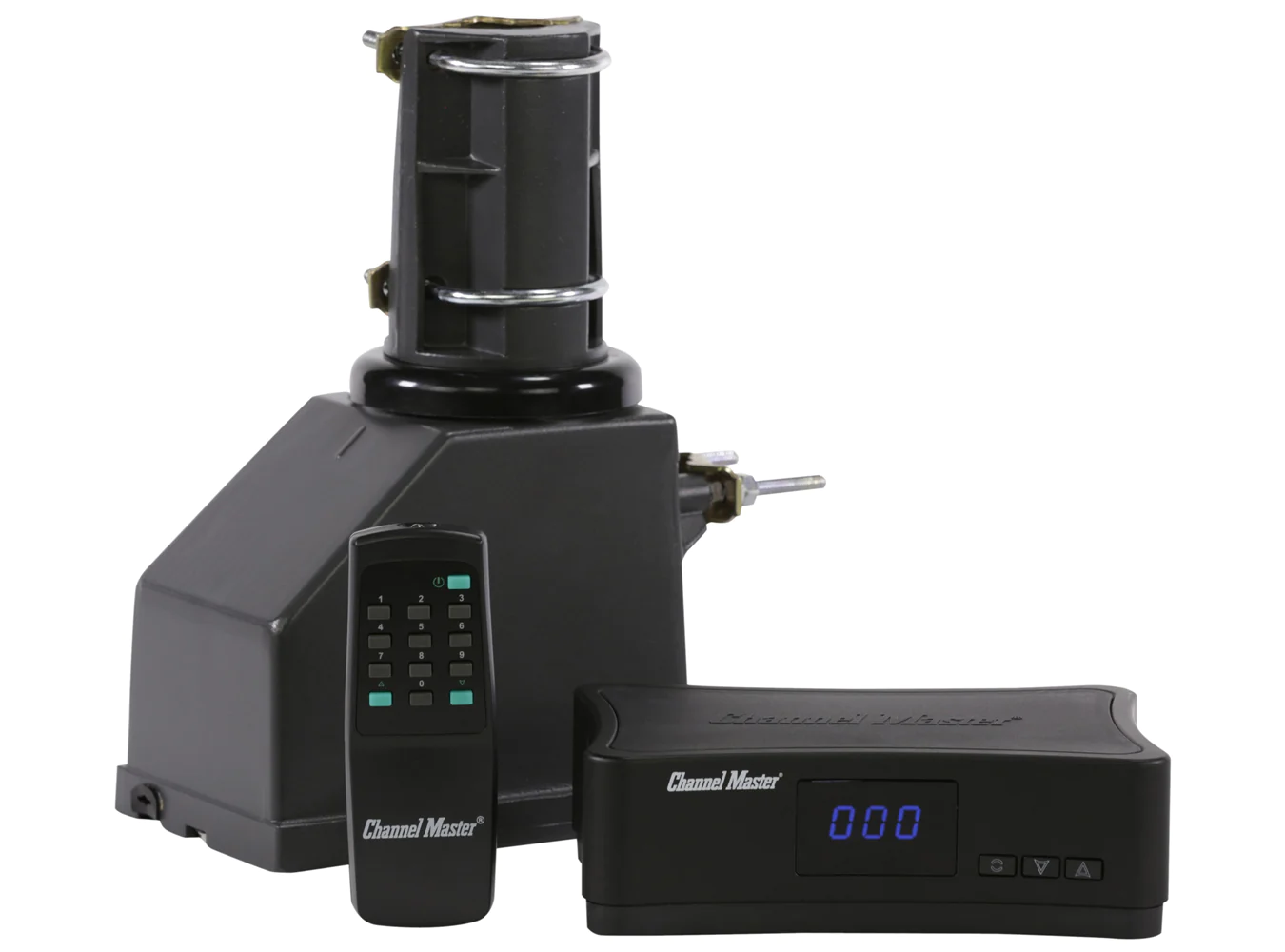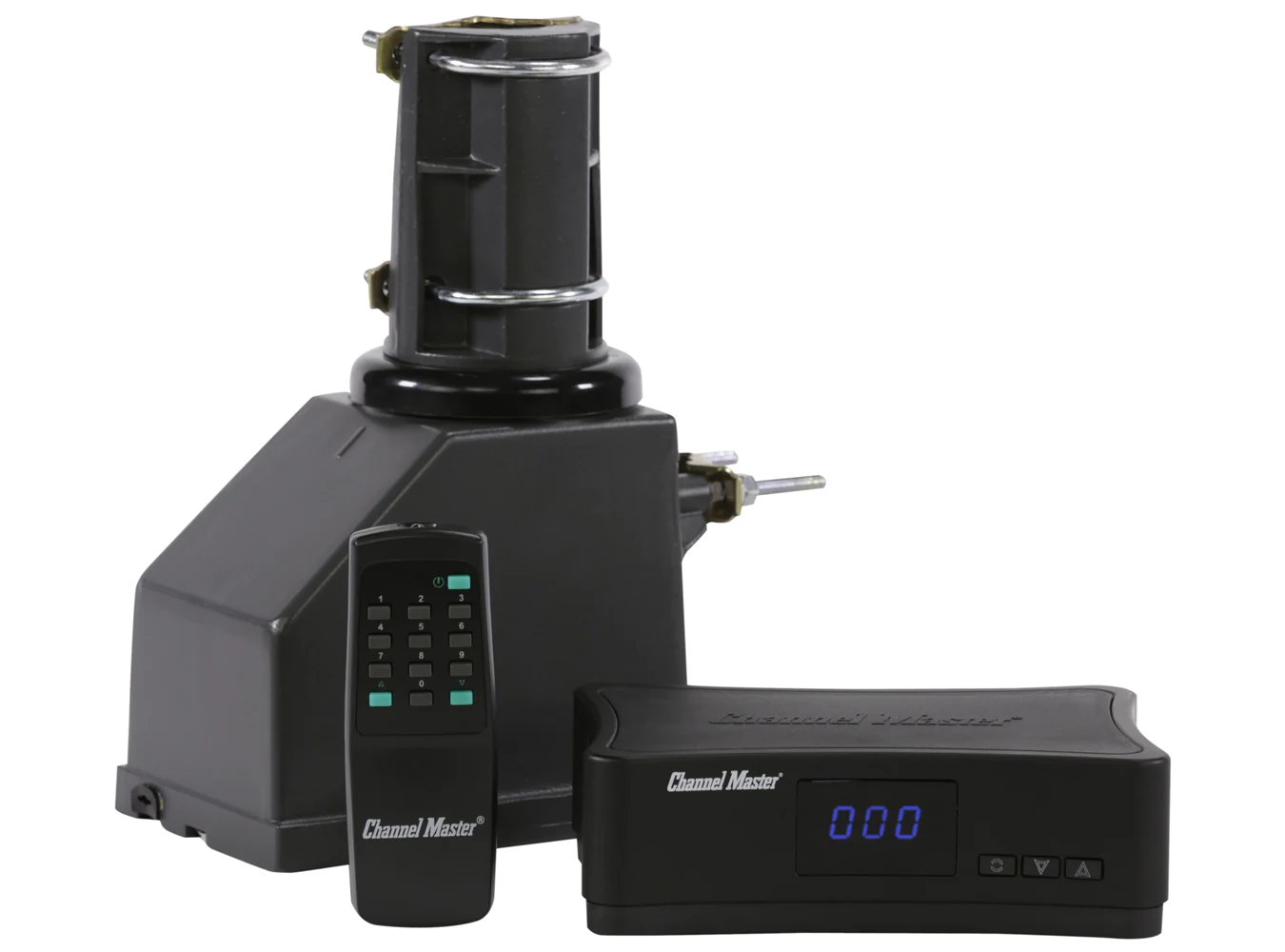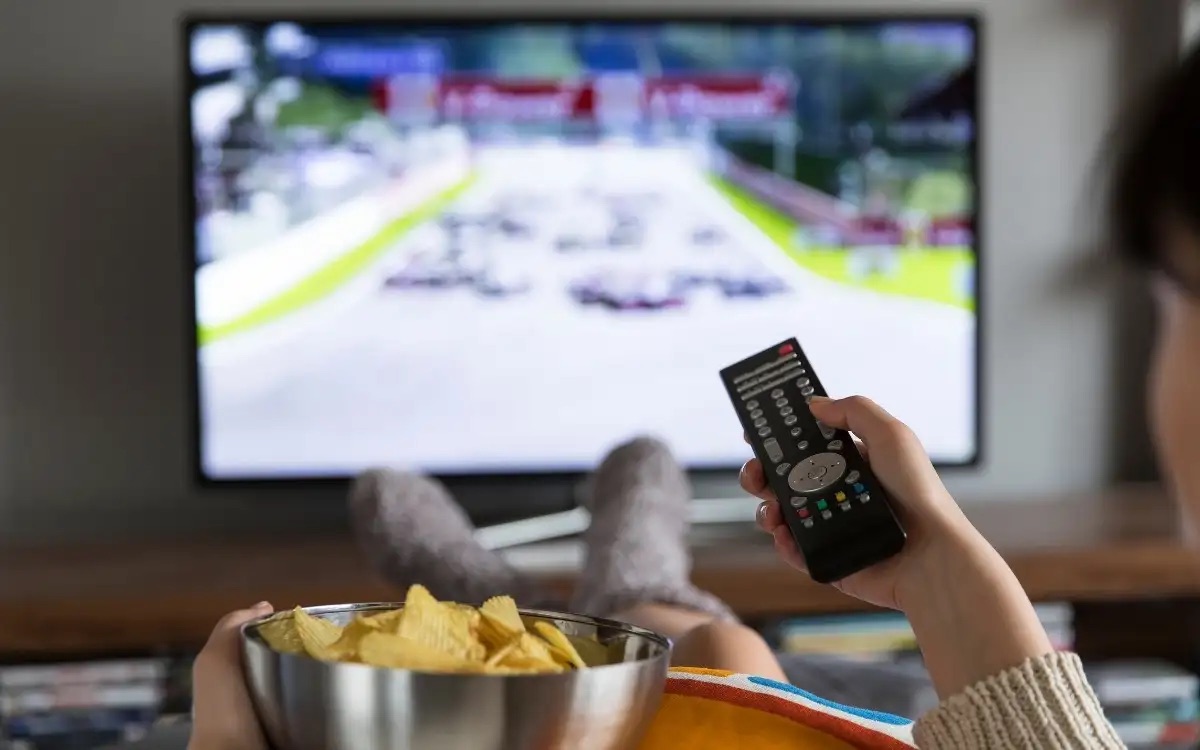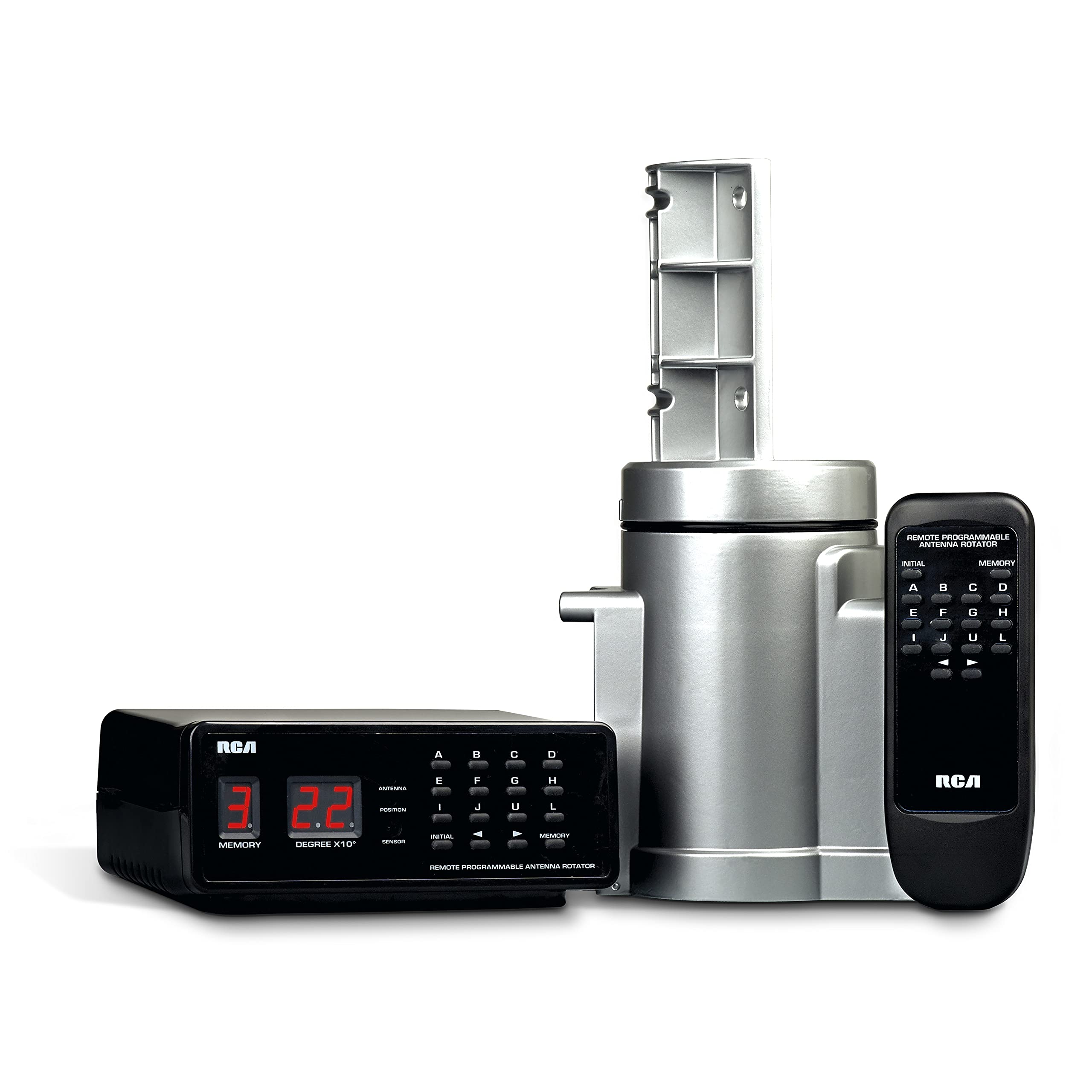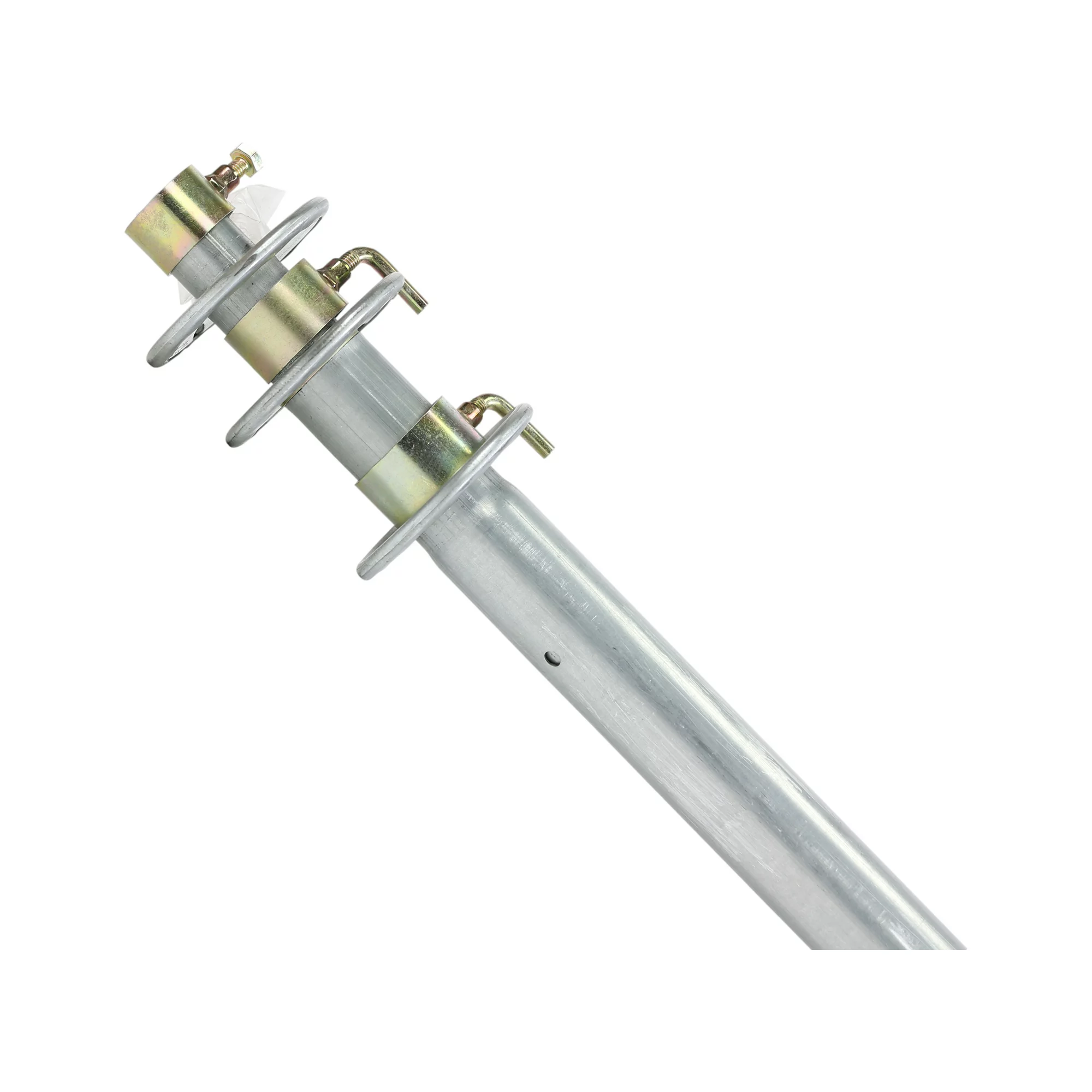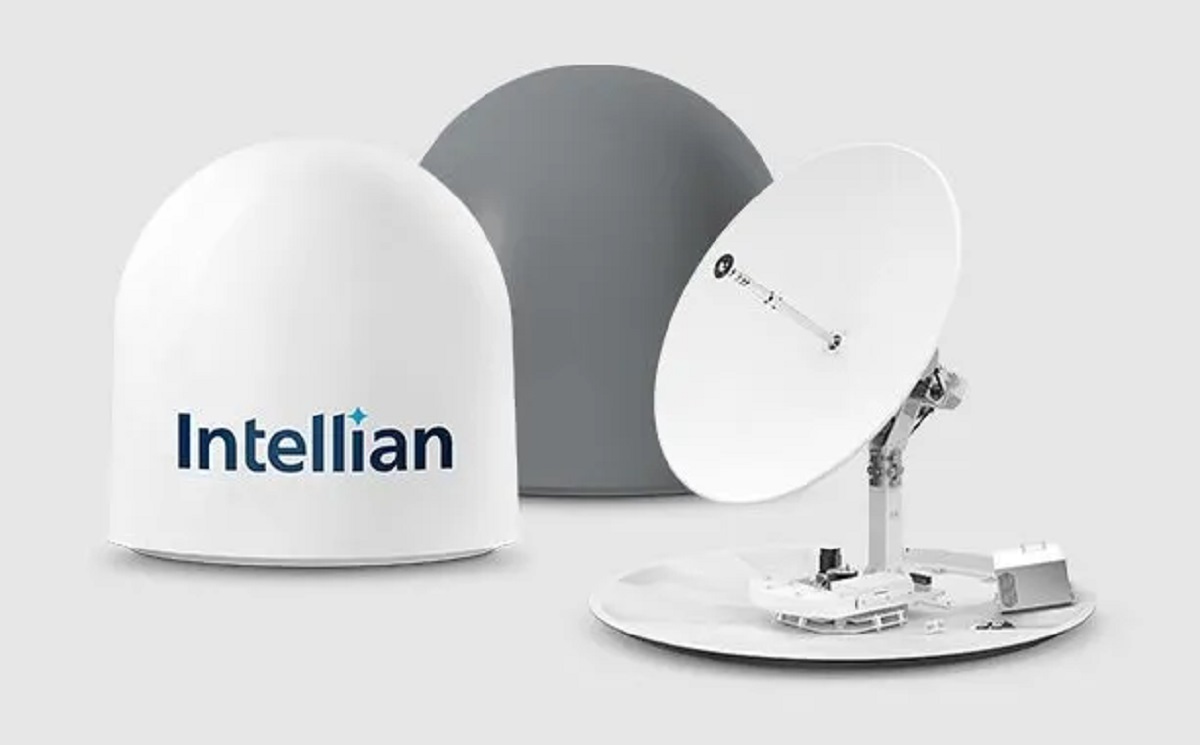Introduction
Welcome to our guide on how to fix TV antenna signal issues. There’s nothing more frustrating than trying to enjoy your favorite television shows only to be faced with a poor or no signal. But fear not, as we have various troubleshooting steps and solutions to help you get your TV antenna signal back on track.
Whether you’re experiencing pixelation, fuzzy reception, or completely missing channels, there are several factors that could be affecting your antenna’s performance. It’s important to note that these issues can happen to both indoor and outdoor antennas, so the solutions we’ll discuss apply to any type of antenna setup.
Firstly, it’s essential to ensure that your TV antenna is properly installed and functioning correctly. This includes checking the antenna’s placement, inspecting the coaxial cable connections, and examining any potential obstructions that may be hindering the signal strength. By going through these troubleshooting steps, you’ll be on your way to a clearer and more stable TV signal.
In the following sections, we’ll dive into the specific steps you can take to fix your TV antenna signal issues. From adjusting the antenna’s position to installing a signal amplifier, we’ll explore various solutions that you can try on your own. However, if you’re unsure or uncomfortable with troubleshooting, we’ll also discuss when it’s best to consult a professional.
Before we begin, keep in mind that each location and situation may have different variables that can affect the TV antenna signal. Therefore, it’s essential to adapt these solutions to suit your specific needs and circumstances. Now, let’s get started and restore your TV antenna signal so you can enjoy uninterrupted entertainment!
Check the Antenna
The first step in fixing your TV antenna signal issues is to check the antenna itself. Start by visually inspecting the antenna for any visible damage or loose connections. Ensure that all elements, such as the antenna elements, reflectors, and mount, are securely in place.
If you have an outdoor antenna, make sure it is properly grounded to prevent electrical interference and ensure safety. Check that the cables connected to the antenna are firmly attached and not damaged. Additionally, look out for any signs of rust or corrosion that may affect the antenna’s performance.
For indoor antennas, ensure that the antenna is positioned correctly and isn’t blocked by any objects that could disrupt the signal. The antenna should ideally be placed near a window or as close to the outside as possible to improve reception.
Next, examine the antenna’s connections. If you have a coaxial cable connected to the antenna, make sure it is securely plugged into the TV or set-top box. Wiggle the cable gently to ensure there are no loose connections. If you notice any damage to the cable, consider replacing it as it may be causing signal loss.
It’s also a good idea to check the antenna’s orientation. Outdoor antennas should be aimed towards the nearest transmission tower. You can use online tools or smartphone apps to help you locate the towers and adjust the antenna accordingly. For indoor antennas, experiment with different positions to find the best signal reception.
Once you’ve checked all these aspects, perform a channel scan on your TV or set-top box. This will allow your device to search for available channels and help you determine whether the antenna is functioning properly. If you’re still experiencing issues, move on to the next troubleshooting step.
Adjust the Antenna
If you’re still experiencing TV antenna signal issues after checking the antenna, the next step is to adjust its position. Sometimes, even a slight change in the antenna’s angle or direction can make a significant difference in signal reception.
Start by referring to the signal strength indicator on your TV or set-top box. This can help you identify the current signal level and guide you in adjusting the antenna. Ideally, you want to aim for the highest signal strength possible.
For outdoor antennas, it’s best to have a compass or use online tools to determine the direction of the nearest transmission tower. Gently rotate the antenna in small increments while keeping an eye on the signal strength indicator. Take note of any improvements or changes you observe.
If you have an indoor antenna, try moving it closer to a window or an exterior wall. This can minimize signal interference from objects within your home and potentially improve reception. Experiment with different positions and angles until you find the best signal.
When adjusting the antenna’s position, it’s essential to take into account any potential obstructions, such as tall buildings, trees, or other structures. These obstructions can block or weaken the signal. Adjust the antenna’s position, if possible, to minimize the impact of these obstacles.
Keep in mind that the recommended position and direction may vary depending on your location and the transmission tower’s location. It’s worth doing some research or consulting an antenna installation professional to determine the optimal positioning for your specific area.
After adjusting the antenna, perform another channel scan to check if the signal strength has improved. If you still experience issues, proceed to the next troubleshooting step.
Use a Signal Amplifier
If adjusting the antenna’s position doesn’t solve your TV antenna signal issues, using a signal amplifier can help boost the incoming signal strength. A signal amplifier, also known as a signal booster or preamplifier, can enhance weak signals and compensate for signal loss caused by long cable runs or splitters.
To use a signal amplifier, you’ll need to connect it between the antenna and your TV or set-top box. Simply plug one end of the coaxial cable into the antenna’s output port and the other end into the input port of the signal amplifier. Then, connect another coaxial cable from the amplifier’s output port to your TV or set-top box.
It’s important to choose a signal amplifier that matches your antenna’s specifications and is compatible with your setup. Look for amplifiers that support the frequency range of your antenna and provide sufficient gain for the signal strength you require.
Signal amplifiers are particularly useful if you live far away from the transmission towers or if you have multiple devices connected to the same antenna. They can help compensate for signal loss and ensure a stronger and more reliable signal overall.
However, using a signal amplifier is not always necessary or beneficial. If you live close to the transmission tower or if your antenna already receives a strong signal, introducing a signal amplifier can actually cause signal overload and result in poorer reception. It’s best to test the amplifier in different scenarios and monitor the signal strength to determine if it improves the overall performance.
Remember to perform a channel scan after installing the signal amplifier to ensure the signal strength has improved. If you’re still facing signal issues, don’t worry, as there are more troubleshooting steps to explore.
Check the Coaxial Cable
When troubleshooting TV antenna signal issues, it’s important to inspect the coaxial cable connecting your antenna to your TV or set-top box. The coaxial cable carries the signal from the antenna, and any damage or poor connections can result in signal loss or interference.
Start by visually examining the coaxial cable for any visible signs of damage, such as cuts, frayed ends, or kinks. If you notice any issues, consider replacing the cable with a new one to ensure optimal signal transmission.
Next, check the connections at both ends of the coaxial cable—where it connects to the antenna and where it plugs into the TV or set-top box. Make sure the connections are secure and the cable is tightly screwed in. If you find any loose connections, tighten them to ensure a secure fit.
In some cases, the coaxial cable might be affected by external factors, such as nearby electrical devices or other cables. To minimize interference, keep the coaxial cable away from power cords, audio-video cables, and other potential sources of electromagnetic interference.
If you have multiple devices connected to the same antenna, such as a TV and a set-top box, make sure to use a high-quality coaxial splitter to split the signal without significant signal loss. Improperly installed splitters or low-quality splitters can cause signal degradation and impact your TV antenna’s performance.
If you’ve checked the coaxial cable and connections but are still experiencing signal issues, consider trying a different cable to see if there’s an improvement. Sometimes, a faulty or low-quality cable can be the culprit behind poor signal reception.
Remember to perform a channel scan after making any changes to the coaxial cable to check if the signal strength has improved. If you’re still facing signal problems, don’t worry, as we have more troubleshooting steps to explore.
Reposition the Antenna
If you’re still experiencing TV antenna signal issues, it may be necessary to reposition the antenna. Sometimes, even a slight adjustment in the antenna’s location can make a significant difference in signal reception.
Start by evaluating where the antenna is currently positioned. Look for any potential obstructions like trees, buildings, or other objects that could be blocking or interfering with the signal. If possible, reposition the antenna to a higher location or a spot with fewer obstructions.
If you have an outdoor antenna, consider mounting it on a taller mast or pole to improve the line of sight to the transmission tower. Adjust the angle and direction of the antenna slightly to find the best signal reception.
For indoor antennas, try moving the antenna closer to a window or as close to the outside as possible. This can help minimize signal interference from interior objects and improve the chances of receiving a stronger signal.
Experiment with different positions and angles for the antenna. Sometimes, even a small adjustment can result in a significant improvement in signal strength. Keep in mind that the optimal position may vary depending on your location and the direction of the nearest transmission tower.
It can be helpful to consult online tools or smartphone apps to determine the direction of the nearest transmission tower. This information can guide you in repositioning the antenna more accurately.
After repositioning the antenna, perform a channel scan on your TV or set-top box to check if the signal strength has improved. If you’re still experiencing signal issues, don’t worry, as there are more troubleshooting steps to explore.
Remove Obstructions
One common cause of TV antenna signal issues is obstructions that block or interfere with the signal path between the antenna and the transmission tower. Removing these obstructions can significantly improve signal reception and clarity.
Start by surveying the area around your antenna. Look for any objects such as trees, buildings, or large structures that may obstruct the line of sight to the transmission tower. These obstructions can weaken or block the signal, causing signal loss or disruption.
If you have an outdoor antenna, consider trimming or removing any trees or branches that are directly in the antenna’s path. Clearing the area around the antenna can help ensure a clear and unobstructed signal path.
For indoor antennas, repositioning the antenna near a window or moving it to a higher location can help minimize obstructions caused by interior objects. Make sure there are no large furniture, metal objects, or electronics near the antenna that could interfere with the signal.
In some cases, reflections from nearby objects can also cause signal interference. Reflective surfaces like metal roofs, windows, or large mirrors can bounce the signal away from the antenna. Minimizing the antenna’s exposure to these reflective surfaces can help improve signal reception.
It’s worth noting that the impact of obstructions may vary based on your location and the frequency bands used by your local transmission towers. Some antennas are designed to better handle obstructions, so researching and investing in a high-quality antenna can also help improve signal reception in areas with obstacles.
Once you’ve removed or minimized obstructions, perform a channel scan on your TV or set-top box to see if the signal strength has improved. If you’re still experiencing signal issues, there are more troubleshooting steps to explore.
Install a Rotator
If you’re in an area with multiple transmission towers in different directions, installing a rotator can be a helpful solution to improve your TV antenna signal. A rotator allows you to remotely adjust the antenna’s direction, so you can easily switch between different towers and maximize your signal reception.
A rotator consists of a motorized unit that is connected to your antenna and a control unit that allows you to rotate the antenna. The control unit can be a handheld remote or a control panel installed indoors, depending on the model.
To install a rotator, start by mounting the motor unit securely on a pole or mast. Connect the antenna to the rotator using a coaxial cable, making sure the connections are tight. Then, connect the control unit to the rotator.
Once the rotator is installed, you can use the control unit to rotate the antenna in different directions. This allows you to fine-tune the antenna’s position and aim it towards the desired transmission tower.
Before using a rotator, it’s important to research the locations and directions of the transmission towers in your area. This information can help you determine the optimal antenna position for each tower.
When using a rotator, keep in mind that it may take a bit of trial and error to find the best antenna position for each tower. Adjust the antenna’s direction slowly and monitor the signal strength on your TV or set-top box. Perform a channel scan after each adjustment to check the signal quality and whether any adjustments have improved the reception.
Installing a rotator can greatly enhance your TV antenna signal by providing you with the ability to align your antenna with the strongest transmission tower in your area. However, it’s worth noting that rotators can be more complex to install and operate compared to other troubleshooting steps. If you’re unsure, you may want to consult a professional or seek assistance from an experienced antenna installer.
If you’re still experiencing signal issues even with a rotator, there are additional troubleshooting steps to explore.
Check for Interference
Interference from various sources can disrupt TV antenna signals and cause poor reception. Identifying and addressing potential interference sources can help improve your TV antenna signal quality.
One common source of interference is electronic devices. Devices such as cordless phones, Wi-Fi routers, microwave ovens, and even LED lights can emit radio frequency (RF) signals that can interfere with TV antenna signals.
To minimize interference, ensure that your TV antenna is placed as far away as possible from electronic devices. Additionally, try to power off or relocate devices that are in close proximity to your antenna. This simple step can significantly reduce interference and improve signal quality.
In some cases, the interference may be caused by nearby broadcast towers. If you live in an area with multiple transmission towers, the signals from adjacent towers can overlap and interfere with each other. This is especially common in urban areas with densely packed towers.
If you suspect nearby towers are causing interference, adjusting the antenna’s position or using a directional antenna may help. A directional antenna allows you to aim the antenna towards a specific tower, reducing the impact of neighboring towers’ signals.
Power lines and electrical wiring near your antenna can also cause interference. Try to keep your antenna at a safe distance from power lines and avoid running the coaxial cable alongside electrical wires.
In some cases, weather conditions, such as heavy rain or strong winds, can also affect your antenna’s signal reception. While you can’t control the weather, being aware of these factors can help explain intermittent signal issues.
It’s also worth noting that some older TVs or set-top boxes may be more susceptible to interference. If you’ve ruled out other possible causes and still experience poor signal quality, consider upgrading your equipment to newer models that are designed to handle interference better.
Performing a channel scan after addressing potential interference sources can help determine if the signal quality has improved. If you’re still facing signal issues, there are more troubleshooting steps to explore.
Upgrade to a Better Antenna
If you’ve tried various troubleshooting steps and are still experiencing TV antenna signal issues, it may be time to consider upgrading to a better antenna. A higher-quality antenna can provide improved reception, stronger signal, and better performance overall.
When upgrading your antenna, consider the following factors:
- Type of Antenna: Determine whether you need an indoor or outdoor antenna based on your specific requirements and location. Outdoor antennas generally provide better signal reception as they are not obstructed by walls or other structures.
- Antenna Range: Check the range of the antenna and verify that it can cover the distance between your location and the nearest transmission towers. It’s important to select an antenna with an appropriate range for your area.
- Signal Strength: Look for antennas that have a high gain or amplification capability. These antennas can improve weak signals and provide a better overall reception experience.
- Antenna Design: Consider the design of the antenna, such as whether it’s multi-directional or directional. Multi-directional antennas can receive signals from multiple directions, while directional antennas focus on signals from a specific direction.
- Antenna Brand and Reviews: Take into account the reputation and customer reviews of different antenna brands. Look for antennas from reputable manufacturers known for producing high-quality and reliable products.
Keep in mind that upgrading to a better antenna may require additional installation steps, such as mounting an outdoor antenna or repositioning an indoor antenna. It’s important to follow the manufacturer’s instructions or seek professional assistance if needed.
After upgrading your antenna, perform a channel scan on your TV or set-top box to check if the new antenna has improved the signal quality. In many cases, a higher-quality antenna can significantly enhance TV antenna signal reception and resolve the issues you were experiencing.
However, if you’ve upgraded to a better antenna and are still facing signal problems, there is one more troubleshooting step you can explore.
Consult a Professional
If you’ve exhausted all troubleshooting steps and are still struggling with TV antenna signal issues, it may be time to seek professional assistance. Consulting a professional antenna installer or technician can help identify and address complex signal problems.
A professional will have the expertise and specialized equipment to diagnose and resolve signal issues effectively. They can conduct a comprehensive analysis of your antenna setup, assess the signal strength in your area, and identify any underlying issues that may be causing the signal problems.
Professional installers can make precise adjustments to the antenna’s positioning, install signal boosters or filters, and optimize your antenna setup for optimal performance. They can also provide recommendations for the most suitable antenna for your location, taking into account factors such as distance from transmission towers, terrain, and potential sources of interference.
Professional assistance can be especially valuable in areas with challenging signal conditions, such as rural locations, hilly terrain, or areas with numerous obstacles. They have the experience and knowledge to overcome these obstacles and ensure you receive the best possible TV antenna signal.
When consulting a professional, it’s important to provide them with as much information as possible about your signal issues, including any troubleshooting steps you’ve already taken. This will help them accurately assess the situation and provide appropriate solutions.
Keep in mind that professional services may come at a cost, but if you’ve exhausted all other options without success, it may be a worthwhile investment to ensure a reliable and high-quality TV antenna signal.
Remember to continue documenting any changes or improvements made by the professional, as it can be useful for future reference or if you encounter similar issues down the line.
By consulting a professional, you can have peace of mind knowing that an expert is handling your TV antenna signal issues, increasing the chances of finding a satisfactory solution.
Conclusion
Dealing with TV antenna signal issues can be frustrating, but with the right troubleshooting steps, you can enhance your signal reception and enjoy a clearer and more reliable TV viewing experience.
Throughout this guide, we’ve explored various methods to fix TV antenna signal issues. From checking the antenna and coaxial cable to adjusting the antenna’s position, removing obstructions, and even considering an antenna upgrade, each step offers potential solutions to improve signal quality.
It’s important to remember that signal problems can be caused by a combination of factors, such as distance from transmission towers, nearby obstructions, electronic interference, or even the quality of your antenna setup. By systematically going through the troubleshooting steps outlined in this guide, you’ll be on your way to identifying and resolving the underlying issues affecting your TV antenna signal.
However, if you’ve tried all the steps and are still unable to achieve satisfactory results, don’t hesitate to reach out to a professional antenna installer or technician. Their expertise can make all the difference in diagnosing complex signal problems and finding appropriate solutions tailored to your specific situation.
Remember, patience and perseverance are key when attempting to fix TV antenna signal issues. Keep experimenting with different solutions, monitor signal strength, and remain open to seeking professional help if needed. With determination, you’ll be able to overcome the signal challenges and enjoy a reliable and high-quality TV viewing experience.









